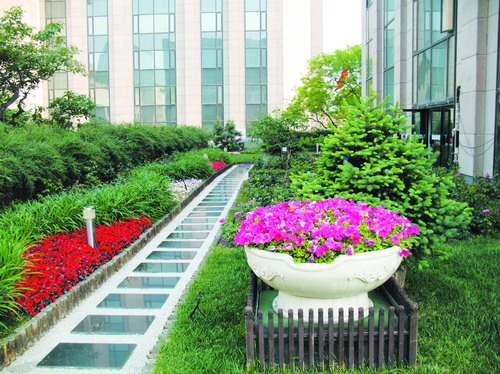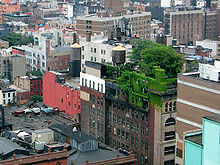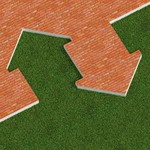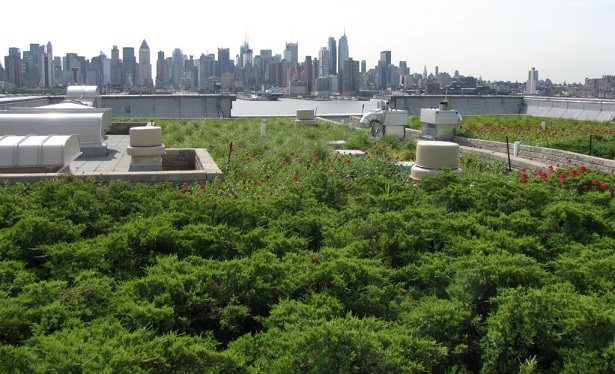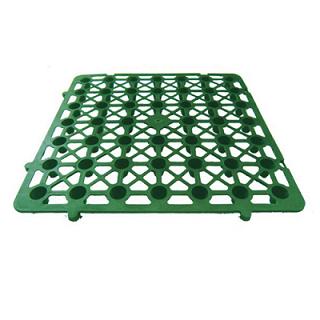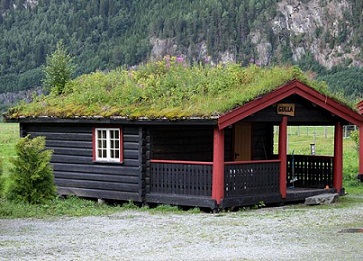What is Green Roof
A green roof is a roof of a building that is partially or completely covered with vegetation and a growing medium, planted over a waterproofing membrane. It may also include additional layers such as a root barrier and drainage and irrigation systems. (The use of “green” refers to the growing trend of environmentalism and does not refer to roofs which are merely colored green, as with green roof tiles or roof shingles.)
Container gardens on roofs, where plants are maintained in pots, are not generally considered to be true green roofs, although this is an area of debate. Rooftop ponds are another form of green roofs which are used to treat greywater.
Also known as “living roofs”, green roofs serve several purposes for a building, such as absorbing rainwater, providing insulation, creating a habitat for wildlife, and helping to lower urban air temperatures and combat the heat island effect. There are two types of green roofs: intensive roofs, which are thicker and can support a wider variety of plants but are heavier and require more maintenance, and extensive roofs, which are covered in a light layer of vegetation and are lighter than an intensive green roof.
The term green roof may also be used to indicate roofs that use some form of “green” technology, such as a cool roof, a roof with solar thermal collectors or photovoltaic panels. Green roofs are also referred to as eco-roofs, oikosteges, vegetated roofs, living roofs, greenroofs and VCWH[1] (Horizontal Vegetated Complex Walls).



